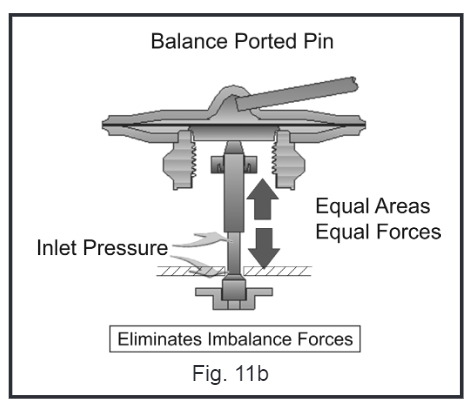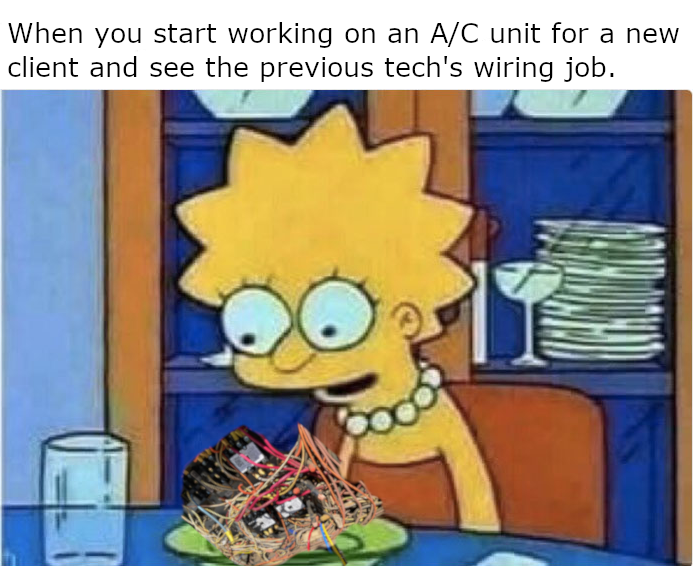Get Tech Tips
Subscribe to free tech tips.
Balanced Port TXV

I walked into a supply house the other day and looked at a “universal” expansion valve on the shelf. The friendly guy behind the counter saw me and walked over. After saying hello, he said:
“That's a great valve; it's even balanced port.”
Now, I am a bit of a troublemaker. I should have just nodded and said, “Uh-huh,” but instead, I asked, “What does balanced port mean?”
The counter guy sort of half-shrugged and said: “I guess it means it works on a lot of different systems?”
I would bet that most people in the industry have heard the term “balanced port” and figure that it sounds like a good thing but don't really know what it does. Not long ago, I would have been one of them.
We have all been taught that three forces act on an expansion valve:
- Bulb pressure is an opening force.
- Evaporator pressure (external equalizer) is a closing force.
- The spring is a closing force.
While the system is within its design operating conditions, these forces are the primary forces at work that allow the valve to “set” the evaporator outlet superheat.
There is a fourth force, which is the opening force applied by the refrigerant passing through the needle. When the inlet (liquid line) pressure is within the normal operating range, this force is accounted for in a normal TXV. In cases where the liquid pressure is higher than usual, the force will be greater, allowing more flow through the coil. When there is lower liquid pressure, the force will be weaker, allowing less flow.
The result of this effect is fluctuating superheat based on liquid pressure, which may be acceptable in small amounts but can become unacceptable quickly on systems that require accurate evaporator feeding or systems that have a wide swing in condensing temperatures and pressures.
Sporlan largely solved this particular issue in the 40s when they brought the “balanced port” valve to market. While the technology is nothing new, it has been improved over time.
Balanced port TXVs can vary in design, but they solve this problem by allowing the inlet pressure to affect the top and bottom of the needle (orifice) equally. This feature eliminates (or reduces) the liquid pressure as an opening force and instead turns it into a “balanced” force that neither opens or closes the valve.
If you have an application where the head pressure is allowed to change or “float” over a wide range, the balanced port TXV is a great choice.
—Bryan










Comments
The best explanation I’ve read. Now the question comes if a typical air conditioning TXV is balanced port? It would seem to me that this characteristic is desirable.
The best explanation I’ve read. Now the question comes if a typical air conditioning TXV is balanced port? It would seem to me that this characteristic is desirable.
It’s difficult to find experienced people in this particular topic, however, you seem like you know what you’re talking about! Thanks
It’s difficult to find experienced people in this particular topic, however, you seem like you know what you’re talking about! Thanks
Really great article! Steve balance port is not txv but it some application it can replace it
Really great article! Steve balance port is not txv but it some application it can replace it
To leave a comment, you need to log in.
Log In